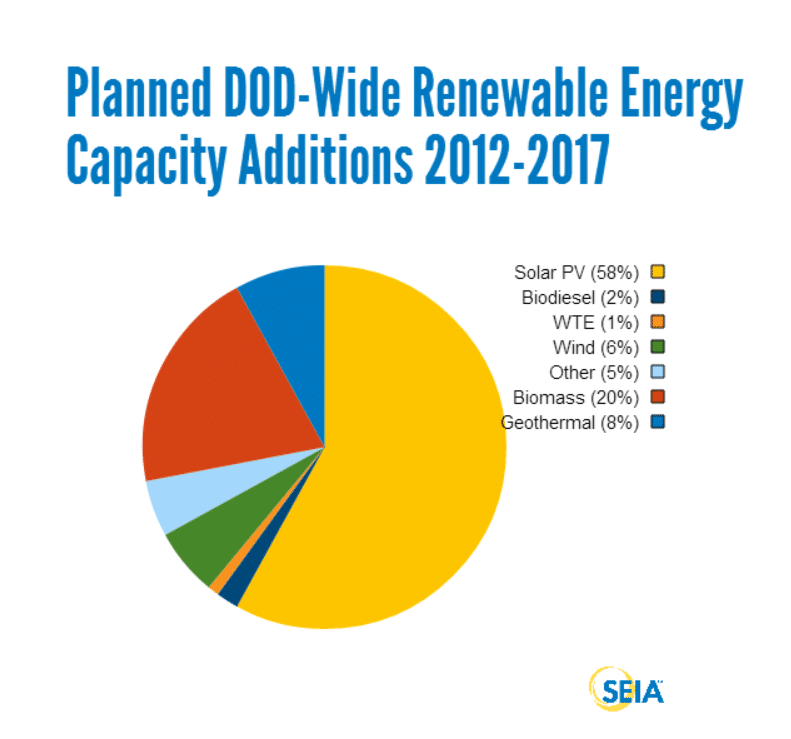In Florida, the Navy and Air Force have joined together with a new power source for the future – and it isn’t a corps of newly-minted Marines.
Instead, Coronal Energy and Gulf Power have broken ground on two solar installations – one at Eglin Air Force Base in Valparaiso, Fla., and the Naval Air Station (NAS) Pensacola. When completed, the combined projects, along with a third as part of Coronal Energy’s Gulf Coast Solar Center Portfolio, will total 120 MW capacity, making the group among the largest installations in the state.
NAS Pensacola’s NOLF Saufley will be comprised of approximately 600,000 photovoltaic panels with a capacity of 50 MW, producing enough energy to power nearly 7,400 Escambia County homes for a year. At Eglin Air Force Base, approximately 375,000 photovoltaic panels with a capacity of 30 megawatts will produce enough energy to power nearly 4,500 Okaloosa County homes for a year.
The new installations join a third project, NAS Whiting Field’s NOLF Holley in Milton, which will contain approximately 475,000 photovoltaic panels with a capacity of 40 MW producing enough energy to power nearly 6,100 Santa Rosa County homes for a year. Construction on the projects began in November and are expected to be completed by this summer.
“Gulf Power is investing in smart renewables such as these solar projects that make economic sense for our customers as part of a balanced energy mix,” said Stan Connally, Gulf Power chairman, president, and CEO.
The installations are the latest efforts by the military to become more energy independent with the use of solar energy and other renewables. The Solar Energy Industries Association (SEIA) reported in 2013 that the Navy, Army and Air Force have each implemented aggressive plans that have put the U.S. military on a path to significantly expand its use of clean, renewable solar energy.*

Each branch has outlined ambitious renewable energy targets that will drive 3 GW of renewable energy installations by 2025. All of these targets have been designed to help meet a wider DOD mandate, title 10 USC 2911, that requires 25 percent of total facility energy consumption to come from renewable energy sources by 2025.
“We continually seek to balance the military mission with the stewardship of this environmental national treasure and look for innovative ways to excel in both arenas,” said Col. Craig Johnson, 96th Civil Engineer Group commander at Eglin AFB. “This project does that by leasing 240 acres of underused land to Gulf Power.”
“In turn, Eglin AFB will receive lease payments we will use to improve the energy resiliency of our installation,” Johnson added. “At the same time, the project will provide a substantial amount of clean energy back to Eglin and the surrounding community.”
SEIA’s report also showed solar energy’s growing role in powering military installations and military homes across the country. The report’s executive summary notes:*
As of early 2013, there are more than 130 megawatts (MW) of solar photovoltaic (PV) energy systems powering Navy, Army and Air Force bases in at least 31 states and the District of Columbia. Combined, these installations provide enough clean energy to power 22,000 American homes.

* The numbers used in the graphics are from the 2013 report, the last available data.
This content is protected by copyright and may not be reused. If you want to cooperate with us and would like to reuse some of our content, please contact: editors@pv-magazine.com.








By submitting this form you agree to pv magazine using your data for the purposes of publishing your comment.
Your personal data will only be disclosed or otherwise transmitted to third parties for the purposes of spam filtering or if this is necessary for technical maintenance of the website. Any other transfer to third parties will not take place unless this is justified on the basis of applicable data protection regulations or if pv magazine is legally obliged to do so.
You may revoke this consent at any time with effect for the future, in which case your personal data will be deleted immediately. Otherwise, your data will be deleted if pv magazine has processed your request or the purpose of data storage is fulfilled.
Further information on data privacy can be found in our Data Protection Policy.